
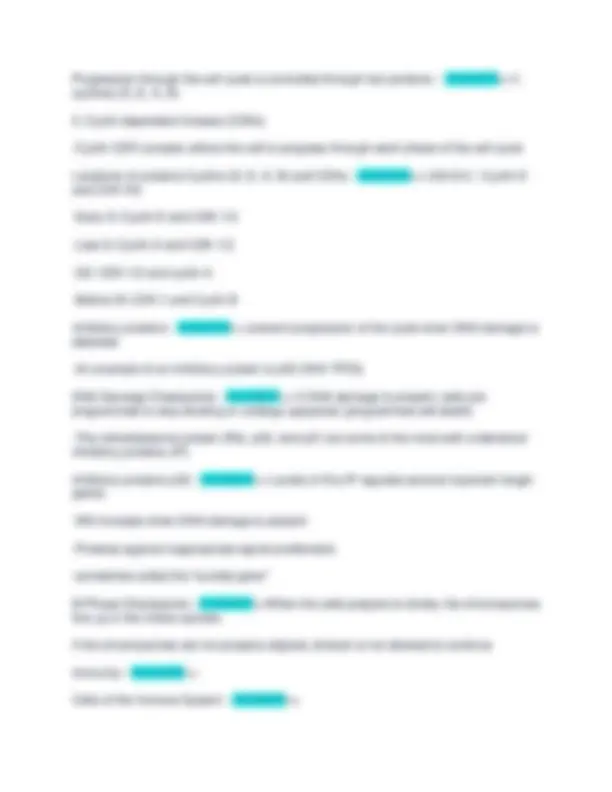
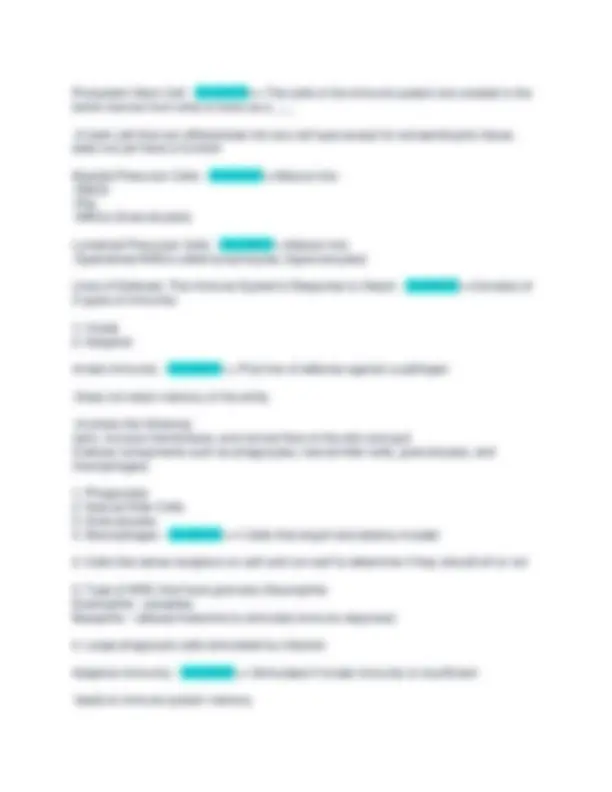
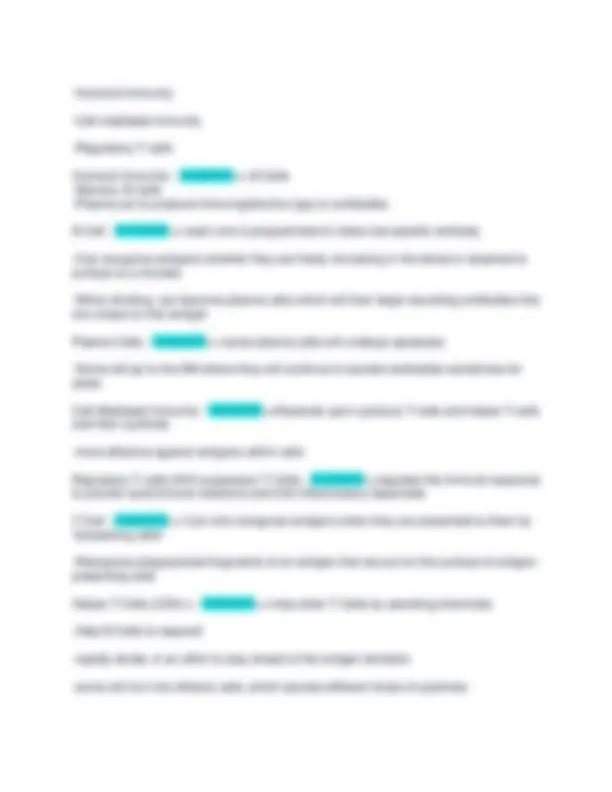
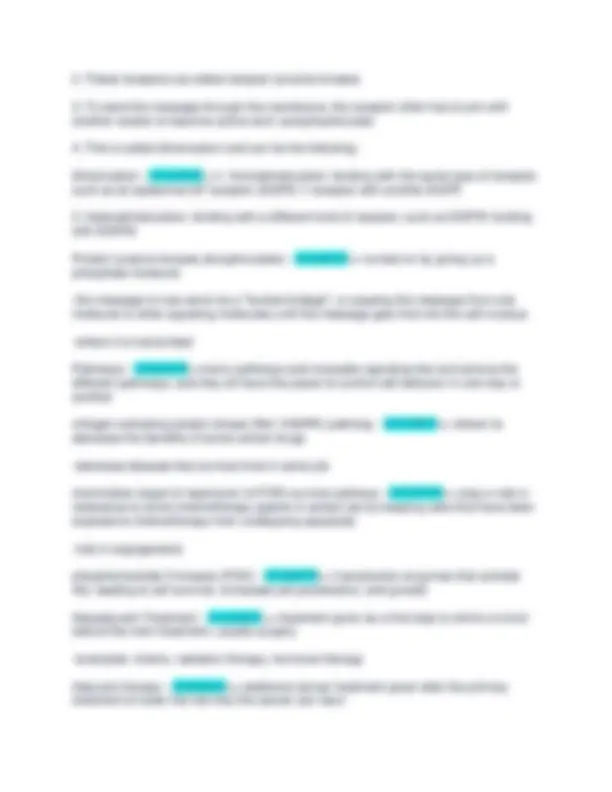
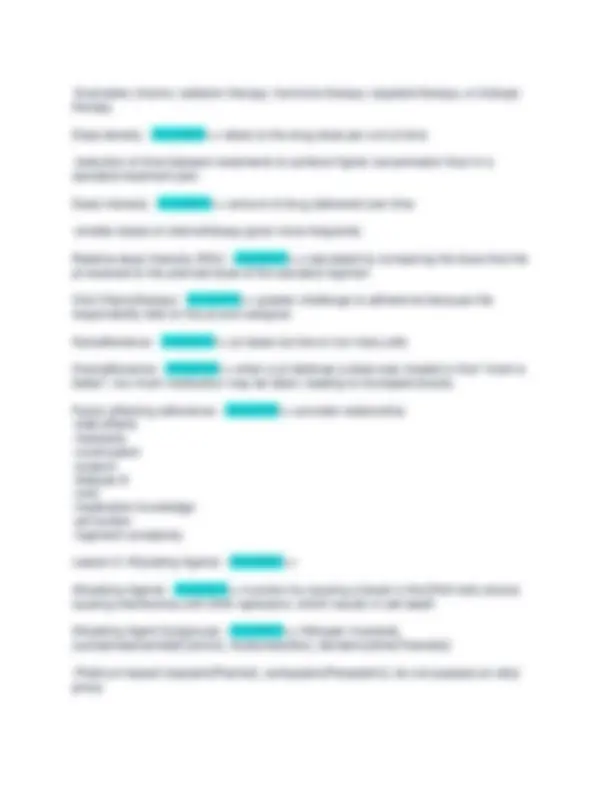
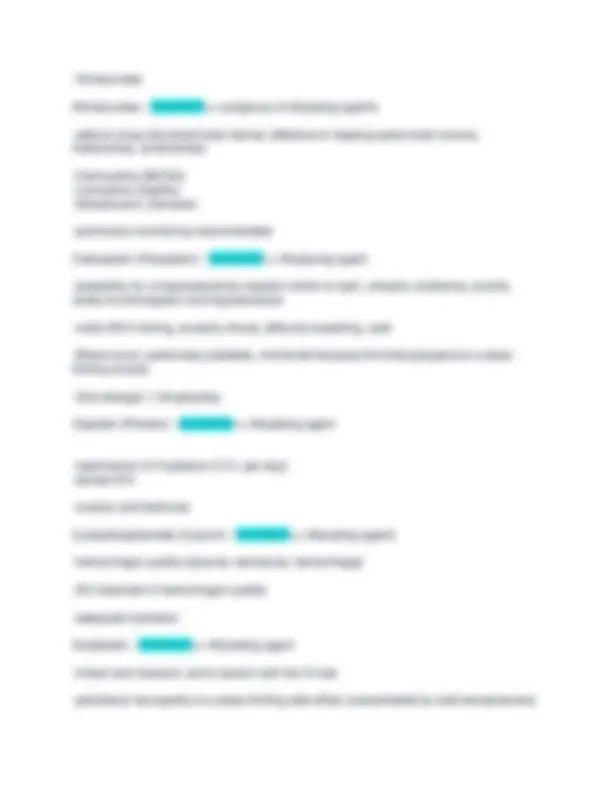
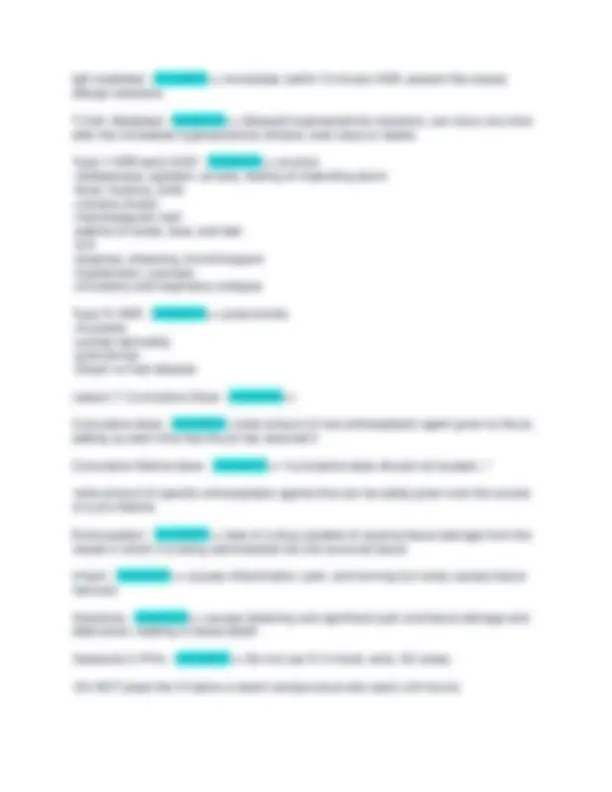
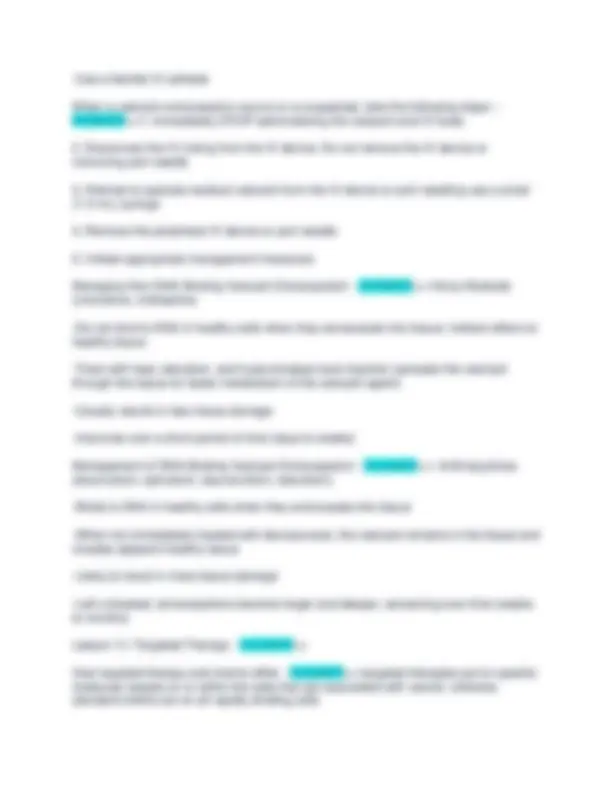
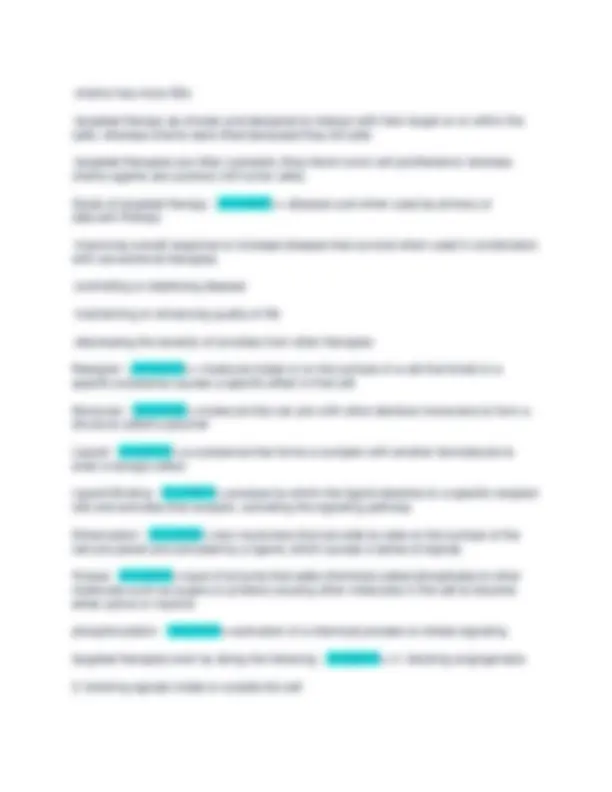

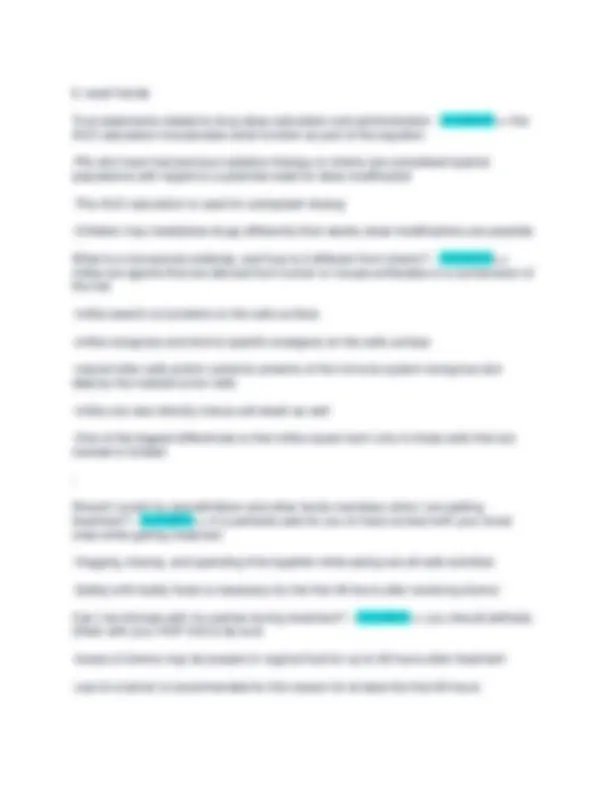


Study with the several resources on Docsity

Earn points by helping other students or get them with a premium plan


Prepare for your exams
Study with the several resources on Docsity

Earn points to download
Earn points by helping other students or get them with a premium plan
Community
Ask the community for help and clear up your study doubts
Discover the best universities in your country according to Docsity users
Free resources
Download our free guides on studying techniques, anxiety management strategies, and thesis advice from Docsity tutors
ONS/ONCC Chemotherapy Immunotherapy Certificate Exam Latest 2024-2025 Questions And Answers (Verified Answers) Lesson 1: Foundations to Set the Stage - ANSWER>> Focusing on Cellular Structure and Function - ANSWER>> The Normal Cell Cycle - ANSWER>>-The cell cycle refers to the ordered seres of processes of DNA replication and mitosis, or cell division -Cell nucleus regulates these processes by gathering and processing complexes molecular information Interphase and Mitotic Phase - ANSWER>>Cell division produces two identical cells through these two major phases During interphase: - ANSWER>>Cell grows and DNA is replicated through the following three steps:
Typology: Exams
1 / 19

This page cannot be seen from the preview
Don't miss anything!












Lesson 1: Foundations to Set the Stage - ANSWER>> Focusing on Cellular Structure and Function - ANSWER>> The Normal Cell Cycle - ANSWER>>-The cell cycle refers to the ordered seres of processes of DNA replication and mitosis, or cell division
Pluripotent Stem Cell - ANSWER>>-The cells of the immune system are created in the bome marrow from what is know as a ___
IgE-mediated - ANSWER>>-immediate (within 5 minute) HSR, present like classic allergic reactions T-Cell--Mediated - ANSWER>>-Delayed hypersensitivity reactions, can occur any time after the immediate hypersensitivity window, even days or weeks Type 1 HSR early S/SX - ANSWER>>-pruritus
Should I avoid my grandchildren and other family members when I am getting treatment? - ANSWER>>-it is perfectly safe for you to have contact with your loved ones while getting treatment